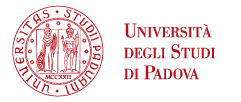"Our Concept of the Earth": the planet, chapter by chapter

The “Our Concept of the Earth: What We Know About Our Planet and How It Was Discovered“ book was recently published. The book is authored by Lapo Boschi, Professor of Geophysics in the Department of Geosciences at the University of Padua. Published by Springer, this around 850-page volume offers an in-depth exploration of geophysics, presenting scientific concepts within the historical context in which they developed.
A chronological Approach to understanding the Earth
Unlike traditional academic textbooks, the book adopts a chronological narrative, leading readers through the discoveries that have shaped our understanding of the planet. From early measurements of Earth’s mass to modern theories of plate tectonics and mantle convection, each chapter builds on the knowledge presented in the previous ones, making the content accessible even to readers with only a basic background in mathematics and physics.
Main Topics
The book opens with an analysis of the first measurements of the Earth’s mass and radius, including contributions by Aristotle, Newton, and major scientific expeditions of the 18th century. It then explores the structure of the planet: rotation, precession, the formation of the solar system, and the laws of motion are discussed to show how early global models of the Earth were developed.
Significant attention is given to the forces that shape the planet: the debate between Neptunism and Plutonism, theories on the origin of rocks, and the role of volcanoes and internal processes. One of the core topics in geology—the age of the Earth—is addressed through the evolution of scientific thought from Newton to Darwin and on to the first quantitative methods based on thermodynamics and radioactivity.
Later chapters delve into theories of continental drift, isostasy, and the emergence of plate tectonics. The focus then shifts to seismology, from elastic waves to the contributions of major figures such as Mallet, Oldham, and Lehmann. Seismic vibrations become tools for reconstructing the Earth’s internal structure, leading to the discovery of the inner core and insights into mantle composition.
The book concludes with an analysis of the mechanisms behind Earth’s internal dynamics: mantle convection, heat flow, radioactivity, magnetism, and subduction. The final chapter—Our Concept of the Earth—brings all the elements together, offering a coherent and updated view of global geodynamics.
Availability
The book is available for purchase in eBook format (PDF and EPUB) as well as in print. University students can access the full text for free through their academic institutions via the official Springer website
For more information about the author and his publications, visit his profile on ResearchGate
Our Concept of the Earth is a valuable resource for those seeking to understand geophysics not only through formulas and theories, but through the historical path that led to today’s knowledge.
GEOTalk - Meeting with the Author: May, 23 - 2025 at 2,30 p.m. | Library of Department of Geosciences





